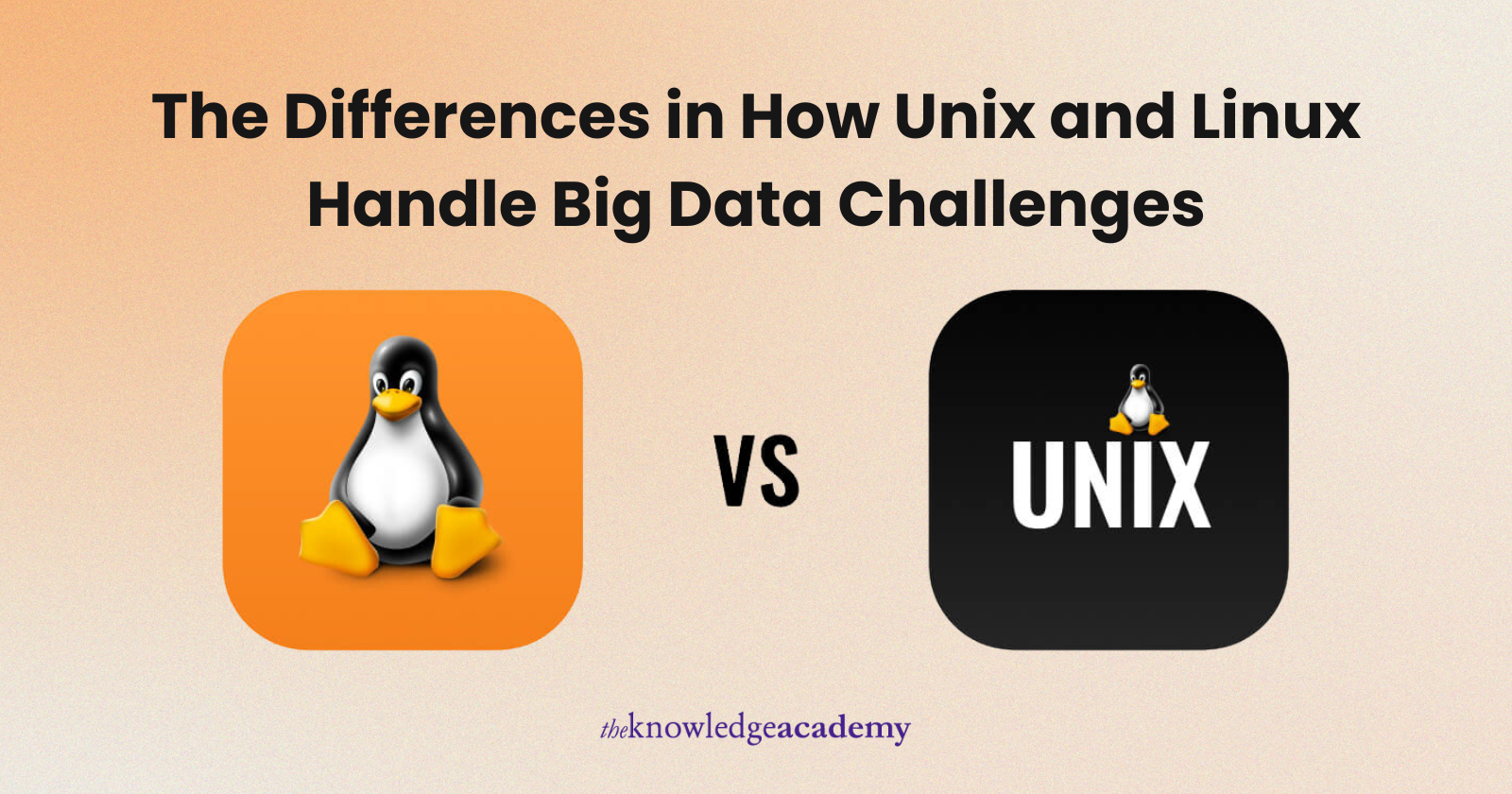The Differences in How Unix and Linux Handle Big Data Challenges
 Aswin Chandran
Aswin Chandran
As we delve into the digital age, the sheer volume of data businesses and institutions manage is staggering. In the heart of this data-driven era, operating systems like Unix and Linux play pivotal roles. Particularly, when we talk about "Unix vs Linux," we're not just comparing two tech giants; we're exploring how each system adapts to the monumental challenges big data presents. This comparison is not just about preference but about understanding the strengths each platform offers to handle large datasets effectively and efficiently.
Table of Contents
Foundational Differences Between Unix and Linux
Scalability and Performance
File System Management
Security Features
Community Support and Innovation
Cost Implications
Choosing the Right System for Big Data Tasks
Conclusion
Foundational Differences Between Unix and Linux
Before we dive deeper into how these systems manage big data, let’s clarify the fundamental distinctions. Unix, developed in the 1970s, is known for its robustness, which is essential in handling sensitive and large-scale enterprise operations. It's a closed source system, which means its development is restricted to a certain group of developers. Linux, on the other hand, entered the scene in the early 1990s as a free, open-source alternative to Unix. It offers greater flexibility and customisability, which have made it extremely popular in tech communities, especially among those dealing with big data.
Scalability and Performance
When it comes to scalability, Linux often takes the lead due to its open-source nature. The community around Linux continuously works on improvements that enhance its ability to scale massively and integrate with modern computing environments. Unix, while historically stable and reliable, sometimes struggles with the rapid integration of new technologies due to its more closed ecosystem.
File System Management
File system management is crucial in big data applications, and here, the differences between Unix and Linux become apparent. Unix file systems are designed for stability and data integrity, which is why they are prevalent in systems where data loss could be catastrophic. Linux file systems, however, are more varied and adaptable, offering features like journaling, which can be crucial for recovery in big data processing and storage.
Security Features
Security is another critical factor in big data. Unix has a long-standing reputation for robust security features, making it a preferred choice for institutions that handle sensitive data. Linux, while secure, relies heavily on the community to identify and patch security vulnerabilities. However, its flexibility allows for rapid deployment of security fixes, which is vital in the fast-paced big data environment.
Community Support and Innovation
The vibrant community surrounding Linux is one of its greatest strengths. This community-driven development model means that Linux often pioneers support for new hardware and experimental features, which can be beneficial in big data scenarios where cutting-edge technologies are often employed. Unix, with its more traditional development approach, tends to follow more conservative upgrade paths, focusing on stability and reliability over innovation.
Cost Implications
From a cost perspective, Linux generally offers a more budget-friendly option, especially for startups and smaller companies venturing into big data. The costs associated with Unix systems can be higher, particularly because of licensing and maintenance fees. However, for organisations that require extremely high reliability and support, the investment in Unix might be justified.
Choosing the Right System for Big Data Tasks
Deciding whether to use Unix or Linux for big data tasks depends on several factors, including the specific data applications, budget constraints, and required stability. Linux might be the better choice for those needing a flexible and cost-effective solution that can quickly adapt to new technologies. Conversely, Unix could be preferable for enterprises that prioritise stability and have the resources to invest in its robust architecture.
Conclusion
The debate between Unix and Linux in managing big data is not just about choosing the better system but about selecting the right tool for specific needs. Both platforms have their merits and drawbacks in the realm of big data. By understanding these differences, organisations can better equip themselves to tackle the challenges of big data, ensuring they not only survive but thrive in the data-centric landscape of modern business.
In this exploration of Unix and Linux, it’s clear that the choice often boils down to the specific requirements of the data environment and the strategic goals of the organisation. Whichever path you choose, understanding the capabilities and limitations of each system will empower you to make the most informed decision.
Subscribe to my newsletter
Read articles from Aswin Chandran directly inside your inbox. Subscribe to the newsletter, and don't miss out.
Written by
